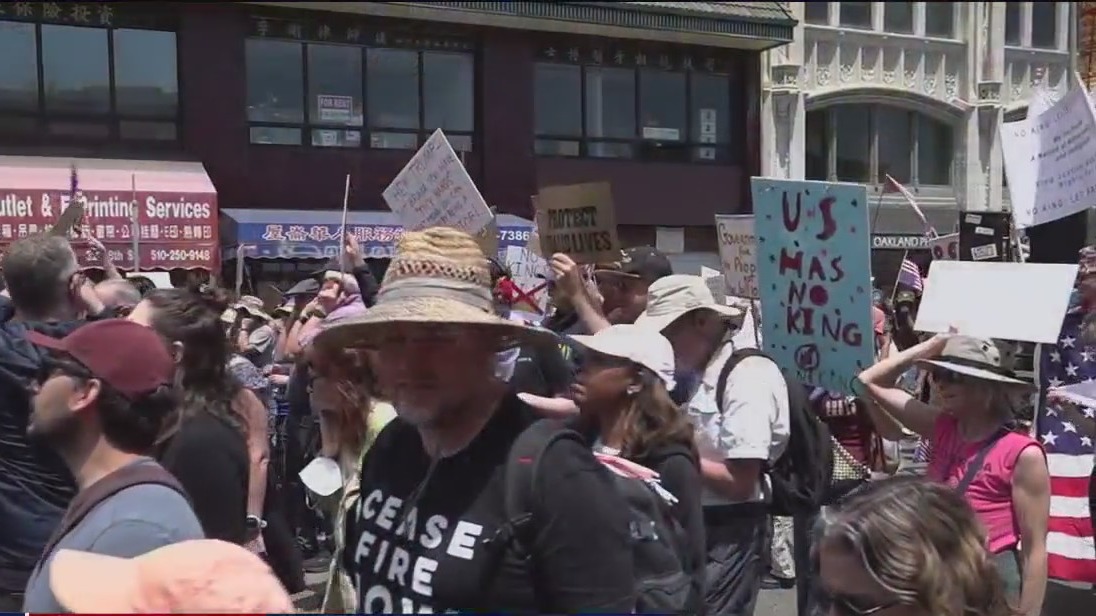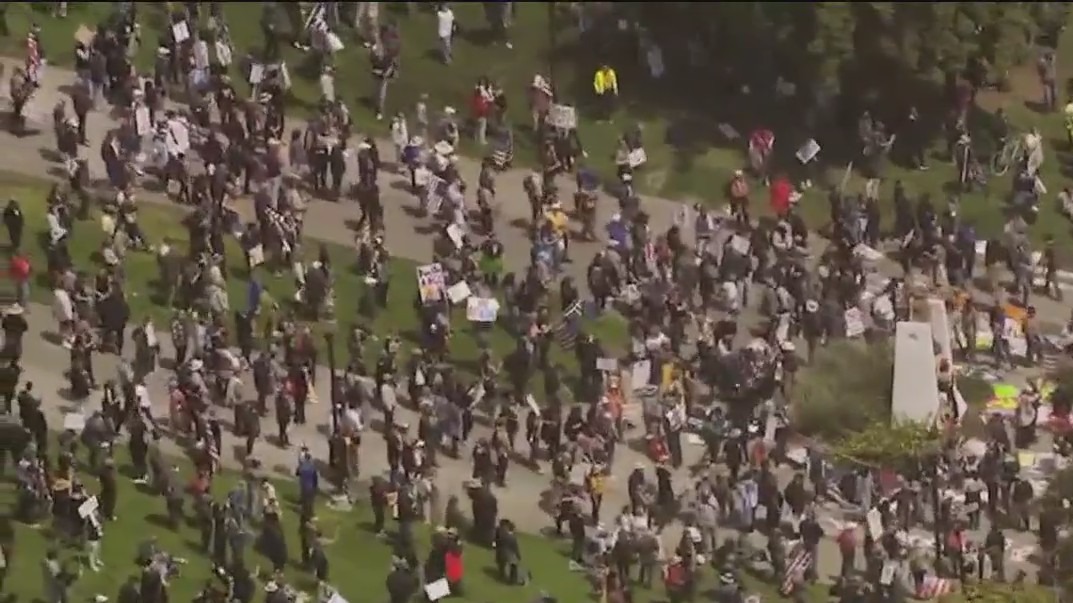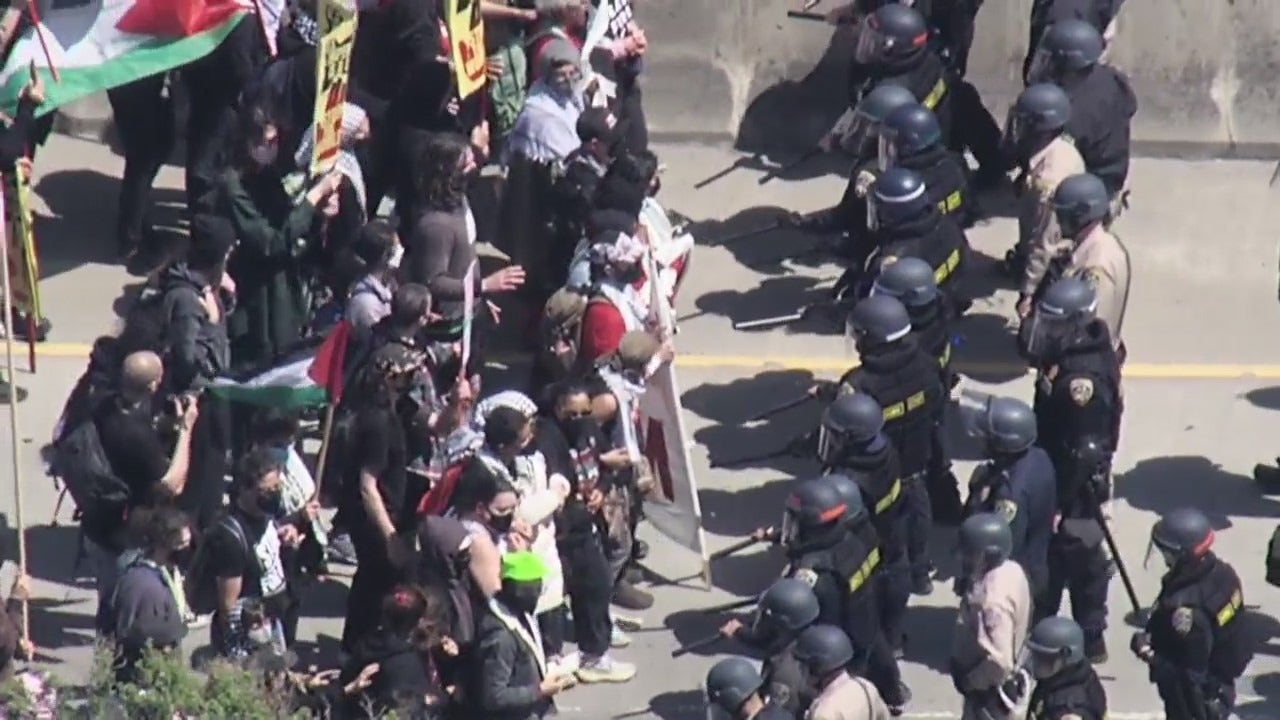
OAKLAND, Calif. – The Bay Area No Kings protests in June were free of violence, but residents planning to attend the Oct. 18 marches and rallies should still learn their rights and take steps to protect themselves from potential harm or prosecution.
The U.S. Constitution guarantees the right to protest, but there are limits to how far a protest can go.
Know your rights
What you can do:
“The First Amendment protects your right to assemble and express your views through protest,” the American Civil Liberties protesters’ rights guide states. “However, police and other government officials are allowed to place certain narrow restrictions on the exercise of speech rights.”
Protesters are free to gather so long as they are not blocking vehicle or pedestrian traffic, or access to government buildings.
“Your rights are strongest in what are known as ‘traditional public forums,’ such as streets, sidewalks and parks. You also likely have the right to speak out on other public property, like plazas in front of government buildings, as long as you are not blocking access to the government building or interfering with other purposes the property was designed for,” the guide states.
However, the same rights that protect protesters also apply to counter-protesters, who are equally entitled to voice their opinions. That protection does not mean that an event can be physically disrupted.
While the first amendment protects the right to express an opinion, making “true threats” such as inciting others to violence or breaking the law can be legally actionable.
The ACLU’s guide encourages people who believe their rights have been violated to record everything they can, including officers’ badge and patrol car numbers, as well as the agency they work for, get witness contact information, photograph any injuries and then file a complaint with the agency’s internal affairs division or a civilian complaint board.
 Police rights
Police rights
Dig deeper:
Police do have the authority to order protesters to disperse, but can only do so as a last resort.
“Police may not break up a gathering unless there is a clear and present danger of riot, disorder, interference with traffic, or other immediate threat to public safety,” the guide states. “If officers issue a dispersal order, they must provide a reasonable opportunity to comply, including sufficient time and a clear, unobstructed exit path. Individuals must receive clear and detailed notice of a dispersal order, including how much time they have to disperse, the consequences of failing to disperse, and what clear exit route they can follow, before they may be arrested or charged with any crime.”
If arrested, protesters have the right to remain silent, the ACLU recommends, but they should not refuse to provide their name and address to the police.
Attending a protest
What they’re saying:
The Human Rights Campaign states that when protesting, preparation is key. Attendees should stay hydrated and dress for the weather. Protesters should, prior to the event, investigate the area and identify multiple routes to enter and exit the area. An offline-accessible map can be helpful during the protest, and attendees should maintain an awareness of their surroundings, as well as what’s happening in the area.
The ACLU recommends that anyone who decides to bring their phone to a protest should take steps to protect their privacy in case of arrest:
Fully encrypt the data to prevent police accessing it.Disable face and fingerprint recognition to make it more difficult for officers to force an arrestee to unlock their device.Put the phone on airplane mode when not communicating, to reduce radio signals it transmits, and to limit location tracking.
The ACLU also recommends ways protesters can protect their identity, and the identities of fellow attendees:
Wear a face mask and sunglasses to thwart facial recognition technologyDon’t drive to a protest, to avoid tracking via automated license plate readers.Be mindful of posting photos and videos of other protesters, especially when they may contain identifying information such as faces, tattoos, or unique clothing. Blur identifiers before posting online, and avoid capturing faces if live-streaming.Scrub metadata from photos, to prevent identifying the exact time and location a photo was taken, or the photographer’s name. Transfer the photo to a desktop computer and take a screenshot. Post the screenshot, not the original photo.Create a data backup. If a phone is confiscated by police, there’s no guarantee it will be returned.
Physicians for Human Rights suggests that anyone planning to attend a protest or march bring the following items with them:
A backpack or draw-string bag to carry items. Over-the-shoulder and cross-body bags are discouraged.A change of clothes, in case of exposure to chemical irritants.A medical alert bracelet or information about any chronic medical conditions or allergies.An Inhaler, EpiPen and several days of prescription medication, in case of arrest.Water in a plastic bottle with a squirt top, for drinking and/or washing skin and eyes.Identification and/or emergency contact information. Protesters may consider writing this information on their skin.Cash for food and transportation, or for cash bail in case of arrest.
The group also suggests wearing these items to protect against exposure to tear gas or other chemical agents:
Face masks, or other coverings such as scarves or bandannas that can cover from the nose to the chin.Shatter-resistant eye protectionClothing that covers as much skin as possible.Comfortable, close-toed shoes suitable for runningAvoid wearing contact lenses, which can trap irritating chemicals.Avoid wearing makeup for the same reason.
The Source: The ACLU, Human Rights Campaign, Physicians for Human Rights, previous reporting on “No Kings” protests.

